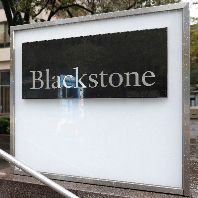Investors, developers, and occupiers are spoilt for choice amongst London’s new districts which are emerging as dynamic destinations for retail, leisure and entertainment, according to a new report from Cushman & Wakefield. Emerging London report analysis 104 locations across Greater London using proprietary data and metrics, to categorise top locations from ‘untapped’ through to ‘truly established’.
Thus Barking, Wembley, and Nunhead as ‘up and coming’ due to their high ‘unrealised potential’ score and relatively high levels of growth catalysts such as start-up space, collaborative industries, public transport and access to housing. British Land is one developer, for example, looking to maximise the opportunity that lies within London’s ‘up and coming’ suburbs. In May, it applied for Master Plan consent for a compressive redevelopment that will effectively create a new urban quarter in Canada Water, with 1m ft² of retail and leisure space and 2m ft² of workspace, as well as 3,000 new homes.
Elsewhere Silvertown, Tottenham, and Brent Cross South remain ‘untapped’ but show exciting levels of unrealised potential indicated by positive demographics, good transport and development pipeline.
Meanwhile Islington, Richmond and Hammersmith as the most ‘truly established’ locations. These centres score highly across the board with excellent transport, access to green spaces, culture and entertainment, and strong house price performance and resilient retail rents. These locations are perceived to appeal to investors with a lower risk-return profile.
Justin Taylor, Head of EMEA Retail at Cushman & Wakefield, said: “Change is in London’s DNA and the city is evolving on an almost daily basis in response to drivers, including economic flux, as well as social and technological advancements. As a result, opportunities are present everywhere across the capital, from street corners in Brixton and brand new boulevards in Wembley. Occupiers must give consideration to return on investment that is to be had in London’s emerging suburbs and villages when designing and implementing their location strategy.”
Chris Lewis, Retail Partner at Cushman & Wakefield, said: “The traditional approach to urban regeneration suggests that opportunities tend to be found in the least populated and built-out areas. In London, population growth and housing demand are leading to densification of existing neighbourhoods which in turn is having a profound knock-on effect on many parts of Greater London, creating real potential for expanded retail schemes. Investors, developers and occupiers who are focused on the capital’s more central locations are already showing a greater willingness to disperse across a wider geographic area to find untapped opportunities.”
Another business that is leading the outer London development trend is property investment and development company Quintain. Quintain first bought into Wembley in 2002 and is currently working to create a new 8.8m sq ft commercial and residential district.
James Saunders, Chief Operating Officer at Quintain, said: “Our vision for our regeneration scheme is not about creating a citadel in Zone 4, but rather it is about creating a Wembley Park that is an integrated part of London. When we first started working in Wembley Park, we were almost purely appealing to people who live and work in the surrounding area. Now, we are part of a wider movement of people and occupiers who are considering London’s outer boroughs as a location to live, visit and invest in, which is being driven by affordability and great transport links.”















